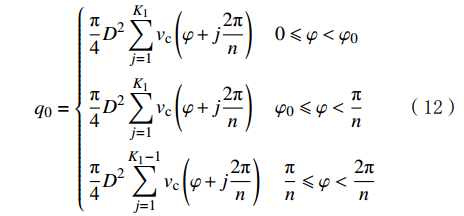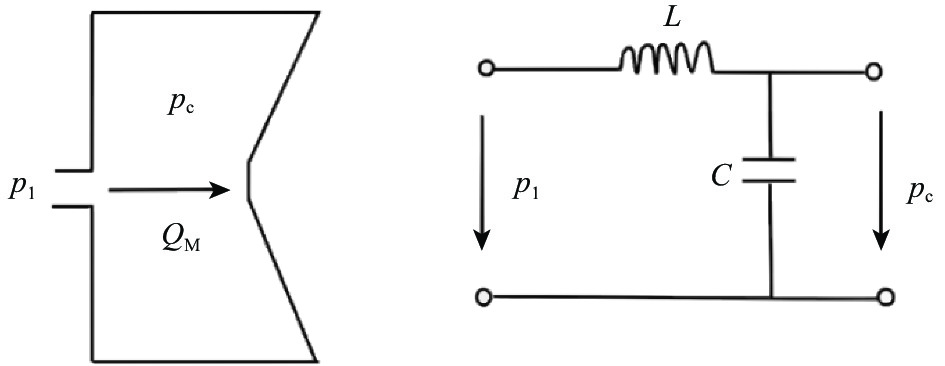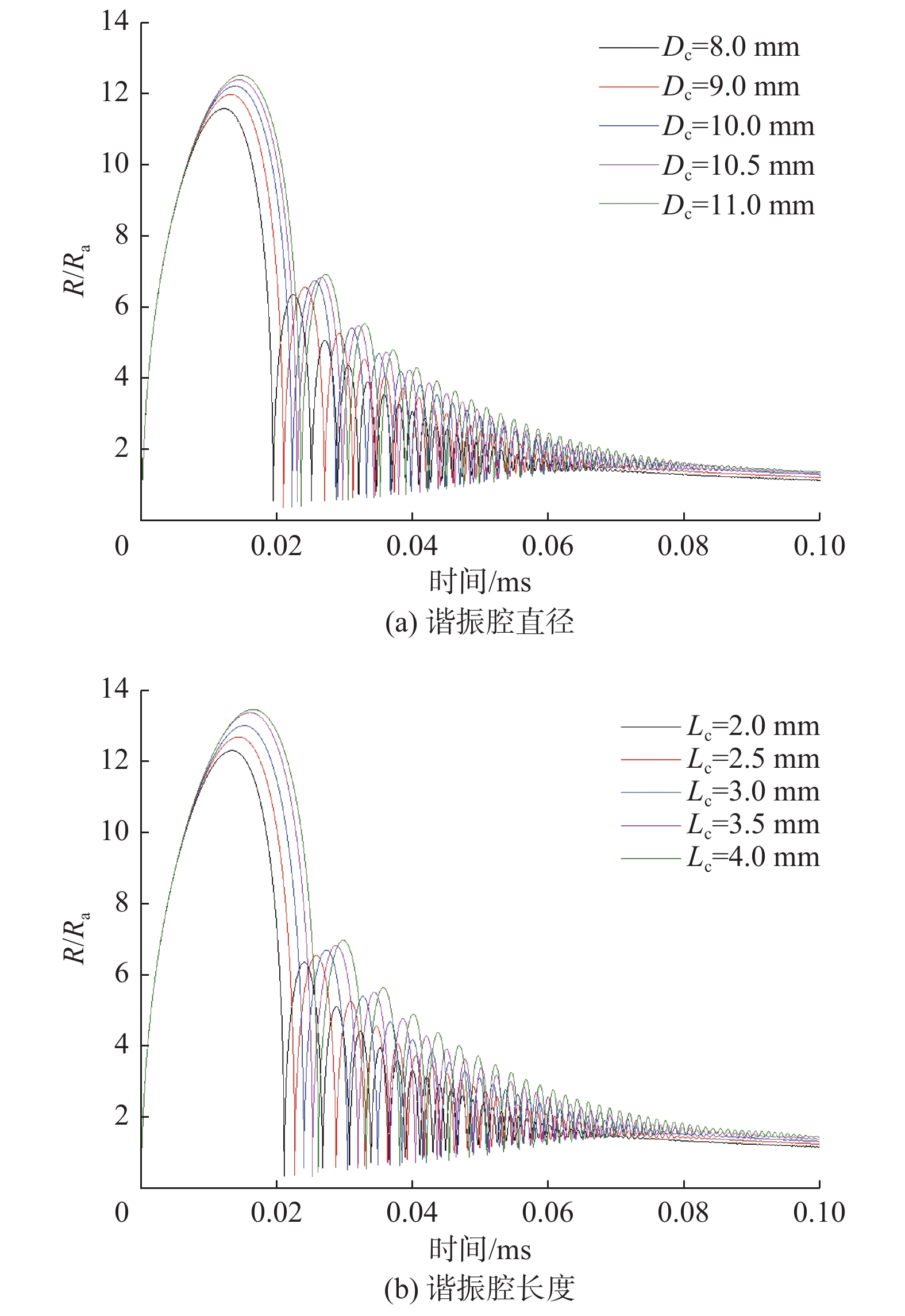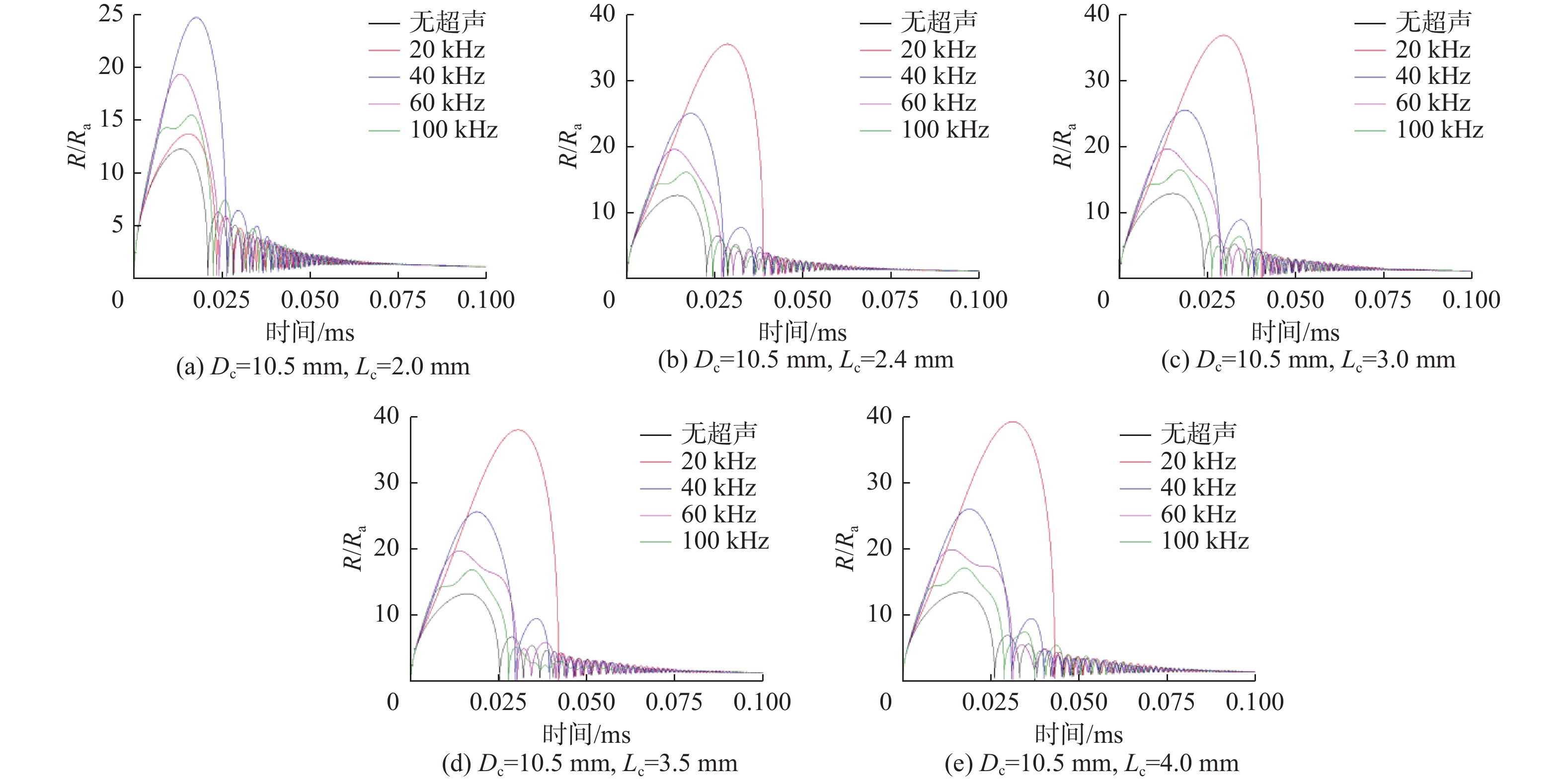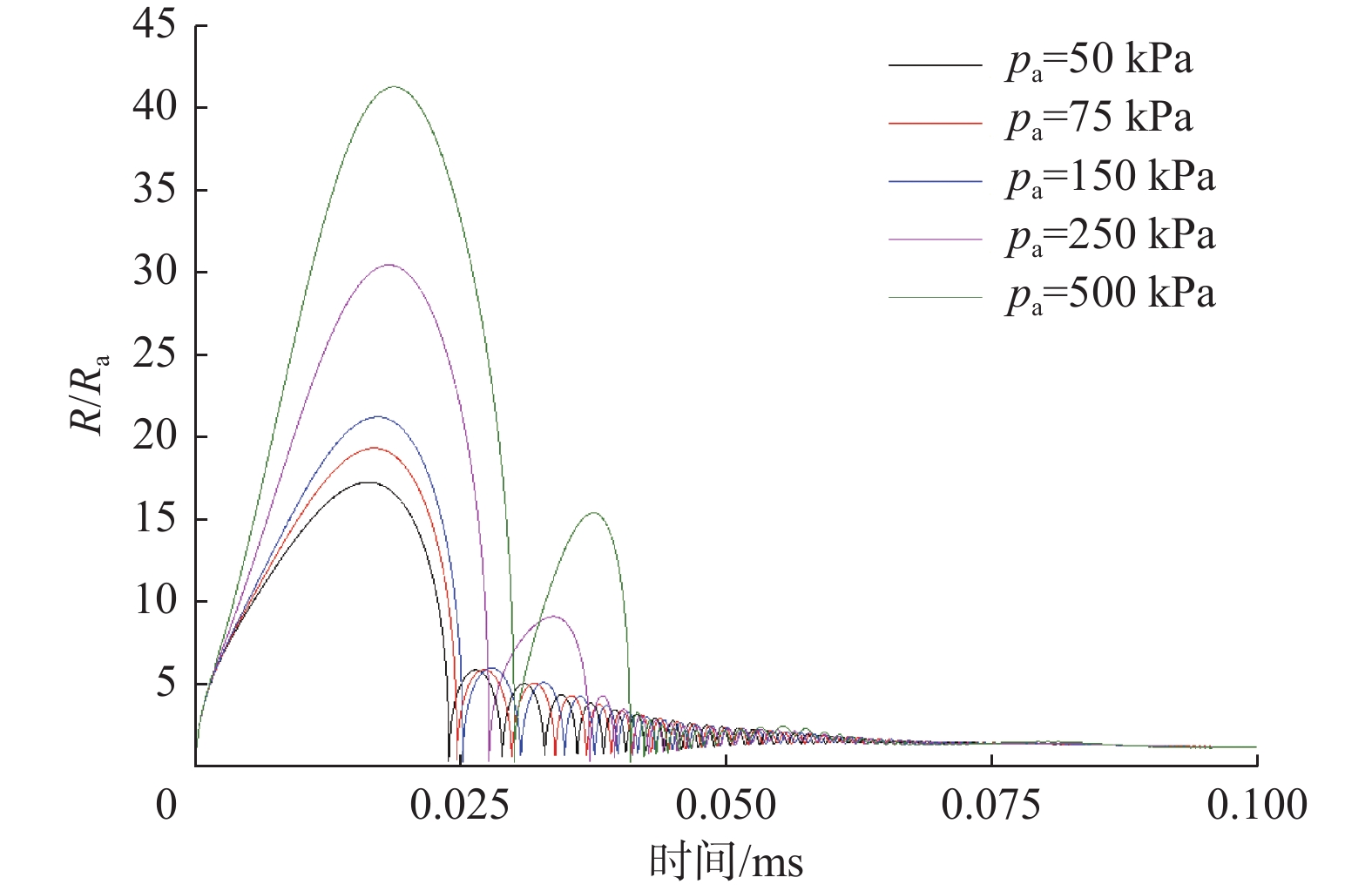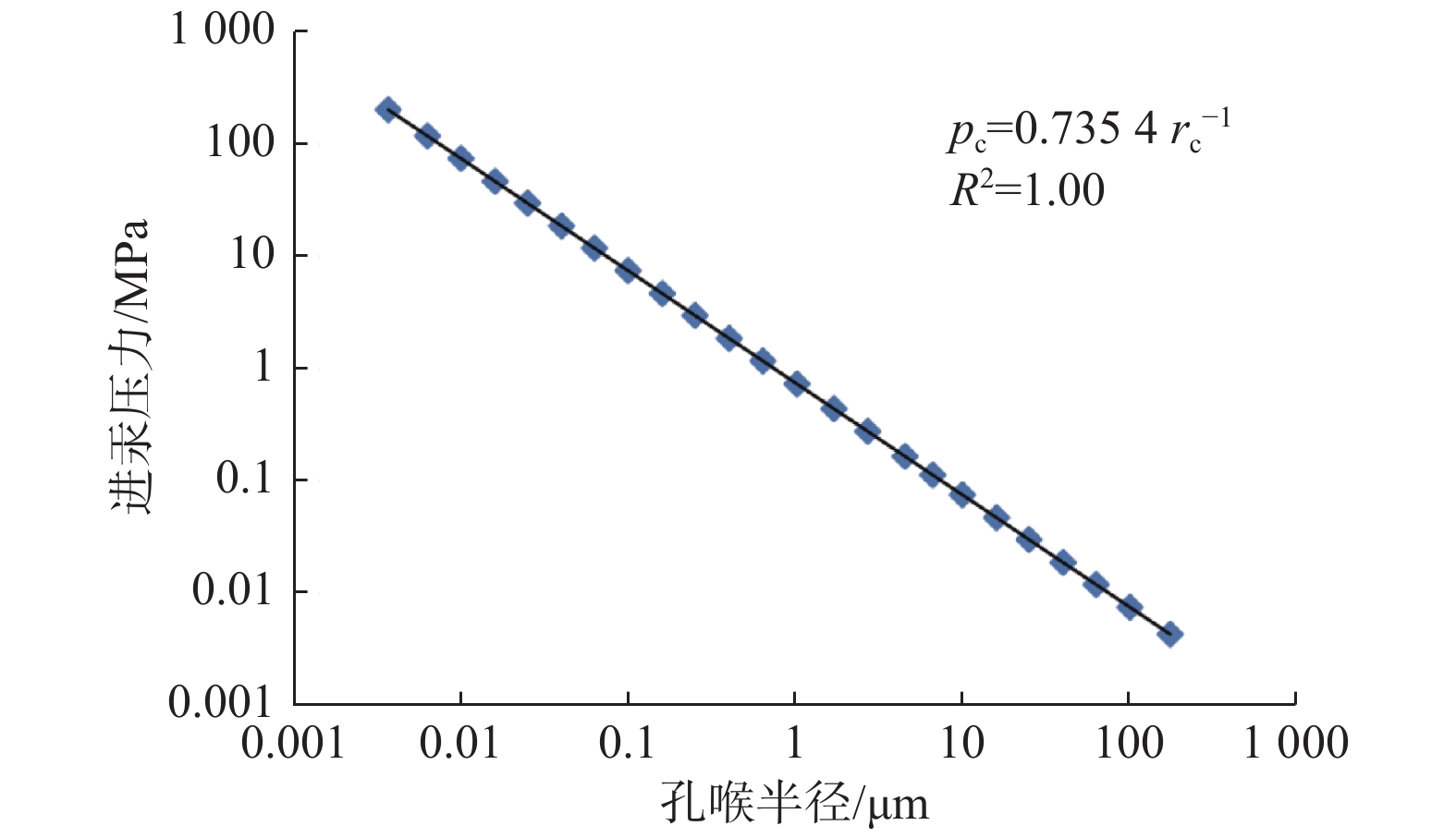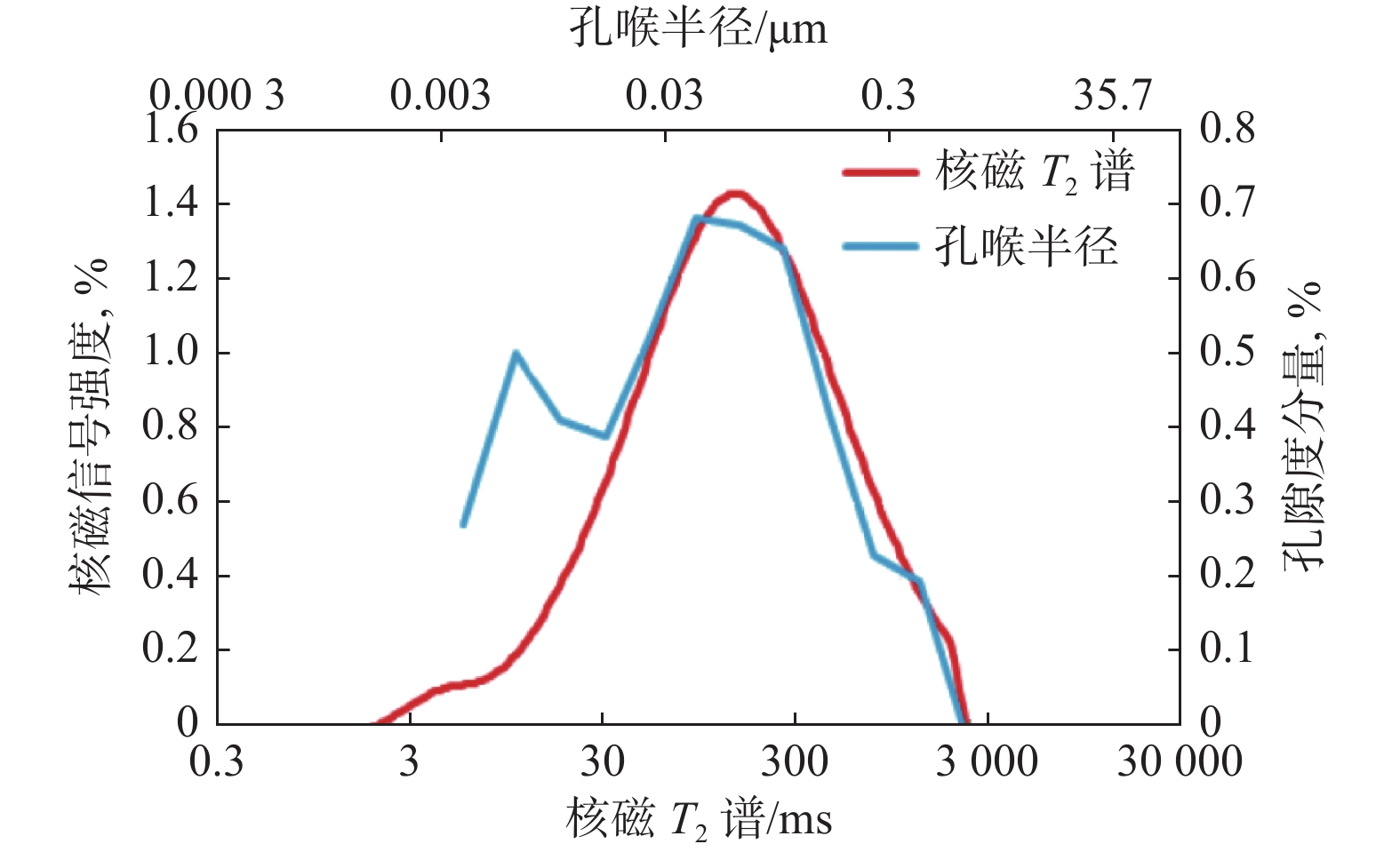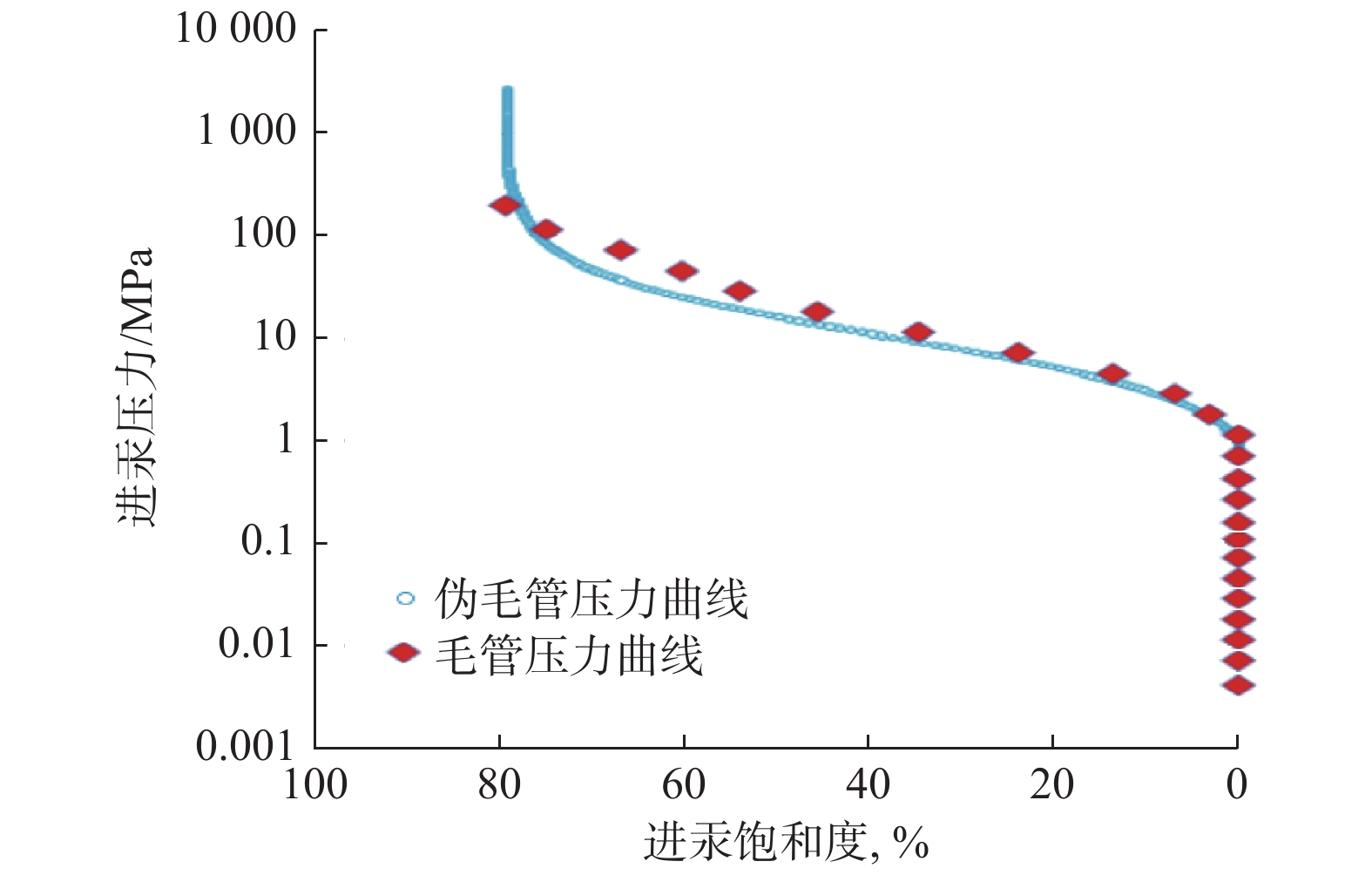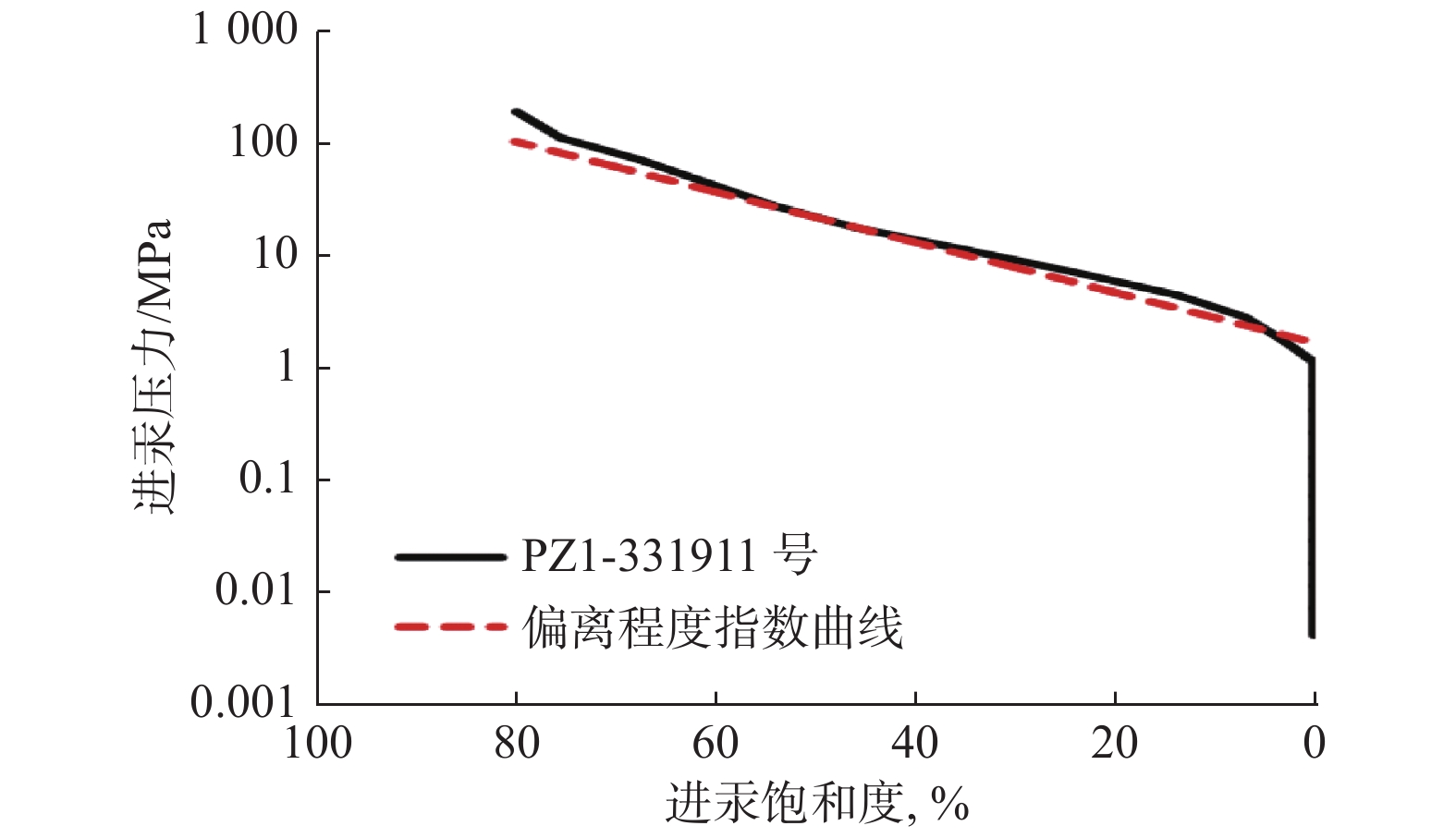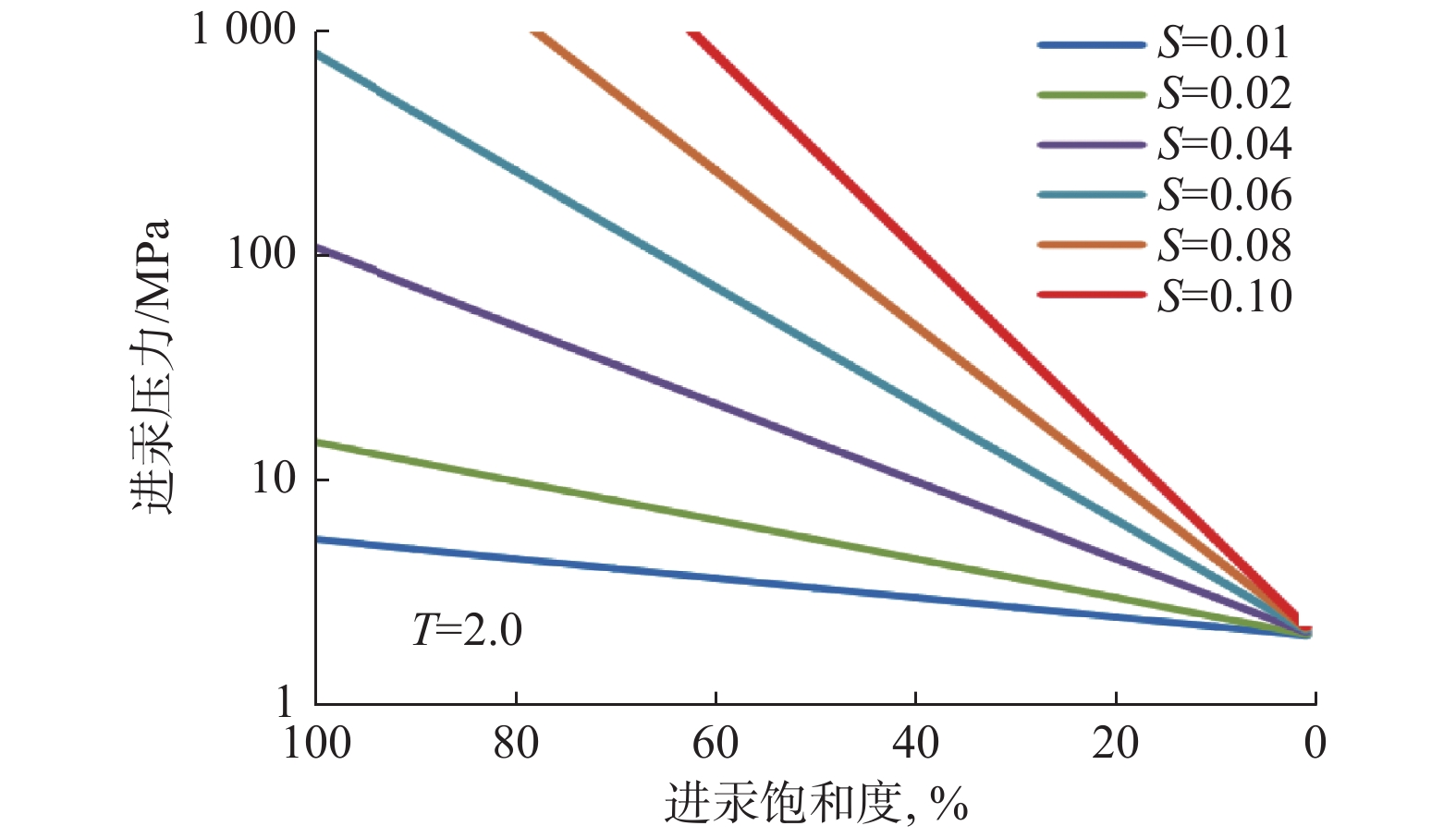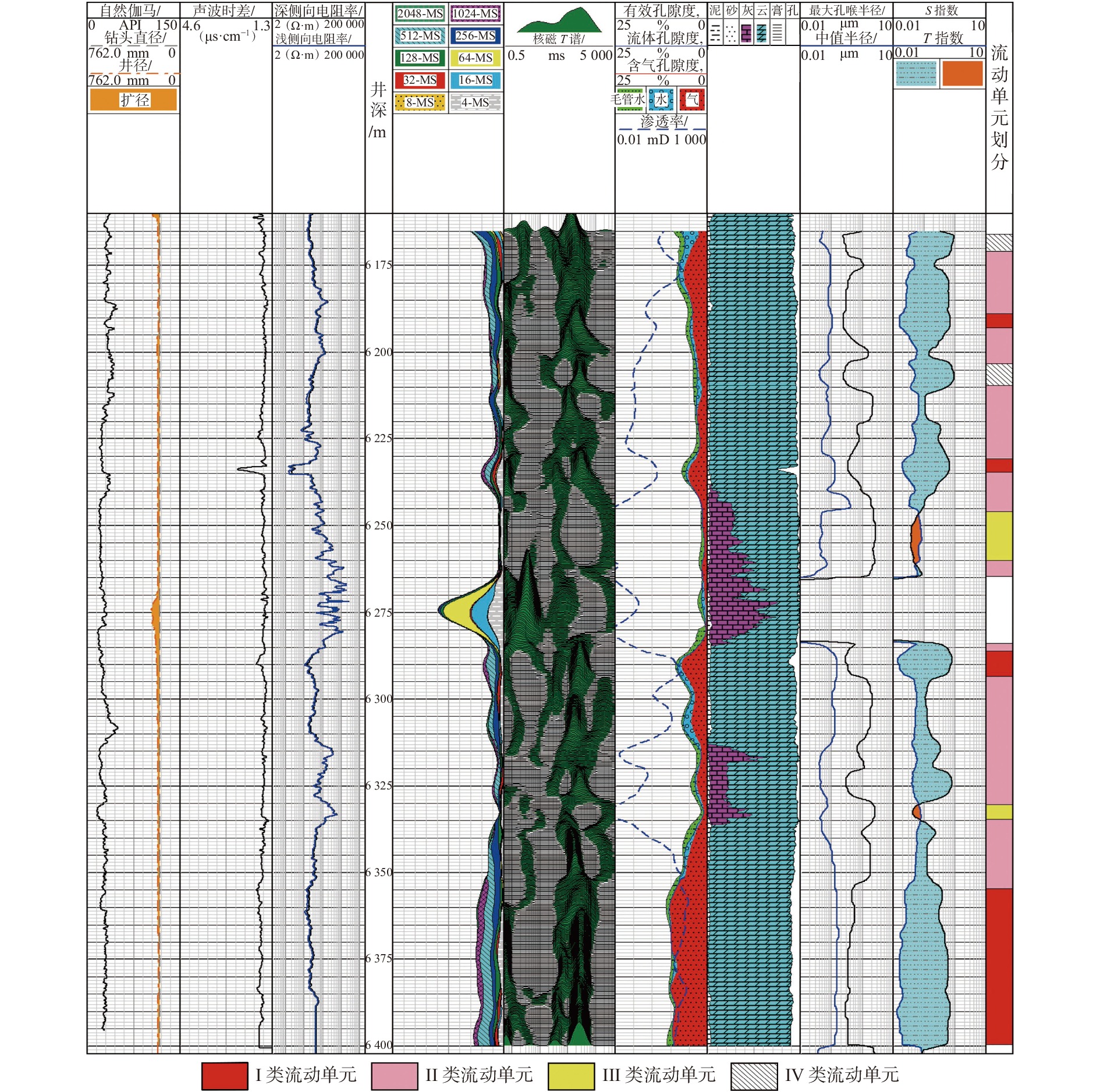Logging Evaluation Method of Flow Units in a Dolomite Reservoir in the 4th Member of the Leikoupo Formation in Western Sichuan Gas Field
-
摘要:
川西气田雷口坡组四段白云岩储层开发井型以大斜度井、水平井为主,主要依靠声波时差和二维核磁共振测井资料获得储层信息,储层评价和流动单元评价难度较大。基于关键直井的沉积相、岩心试验数据和储层对比方法,利用测井资料将雷四段储层划分为4类流动单元,利用核磁共振测井资料构建伪毛细管压力曲线,以拟合度较高的中值压力、排驱压力作为中间参数,计算出偏离程度系数(S指数和T指数),作为定量评价储层孔隙结构的参数,并建立了雷四段储层4类流动单元划分标准。S指数、T指数结合孔隙度、渗透率等参数,实现了沿水平井筒连续、准确评价白云岩储层孔隙结构和定量区分流动单元的目的。白云岩储层流动单元测井评价方法为同类储层水平井评价和开发方案编制提供了技术参考。
Abstract:The dolomite reservoir of the 4th member of the Leikoupo Formation in Western Sichuan gas field primarily has highly-deviated wells and horizontal wells, and reservoir information is obtained principally by means of interval transit time and two-dimensional magnetic resonance imaging (NMR) logging data. Therefore, it is difficult to evaluate the reservoir and flow units. Based on the sedimentary facies, core experimental data, and reservoir comparison methods of key vertical wells, the reservoir of the 4th member of the Leikoupo Formation was divided into four types of flow units as determined by logging data. The pseudo-capillary pressure curve was constructed by NMR logging data. The high-fitness median pressure and displacement pressure were taken as intermediate parameters, and the coefficients of deviation degree (S index and T index) based on the median pressure and displacement pressure were established as parameters for quantitatively evaluating the reservoir’s pore structure. In addition, the classification criteria of the four types of flow units in the reservoir were established. The S index and T index were combined with porosity, permeability, and other parameters for continuously and accurately evaluating the pore structure of the dolomite reservoir along the horizontal wellbore and quantitatively distinguishing flow units. The logging evaluation method of flow units in the dolomite reservoir provides a technical reference for evaluation and development planning for horizontal wells in similar reservoirs.
-
自激振荡射流是利用自激振荡喷嘴内流体的高频脉动而形成的高效射流,由于其具有效率高及无需额外激励元件的特点,被广泛应用在煤层增透、石油钻井和船舶清洗等领域[1-5],基于此技术,瓦斯抽采效果提高约7.8倍[6-8]。亥姆霍兹喷嘴是一种典型的自激振荡射流喷嘴,其独特的构造使流体在亥姆霍兹腔内流动时形成两股具有切向速度差的叠加流体,并且由于开尔文–亥姆霍兹不稳定性,两股流体相互作用形成剪切层,自上喷嘴处脱落的射流剪切涡在剪切层内演化为大尺度的涡环结构,引发强烈的振荡及空化,诱导射流的自持续振荡[9-11]。李江云等人[12]将自激振荡射流分为低压大流量和高压小流量2类,并指出空化作用是低压大流量产生自激振荡的主要原因;而对于高压小流量喷嘴,腔内空化泡增长和坍塌引起的扰动频率是高频振荡射流的主要激发源。数值方法是研究超声空化的主要方法,M. S. Plesset等人[13]在Rayleigh的研究基础上构建了包含气泡表面张力和泡内压力的空化泡动力学方程,并基于高速摄影方法验证了数值计算结果;随后,J. B. Keller等人[14]引入声辐射效应及流体可压缩性,修正了Rayleigh-Plesset 方程。总而言之,探究空化泡的周期性行为及空化强度的控制机理对自激振荡射流的优化具有重大作用。
目前,控制空化规模、提高空化强度的方式主要是将超声空化和水力空化联合。L. Davydov等人[15]研究了超声空化对4种二氧化钛粉体降解水杨酸的影响,结果表明,在光催化过程中超声波对水杨酸的破坏速率和效率有显著影响。吴鹏飞[16]通过观察水动力–声空化的空化泡,表征了其声流耦合空化的周期性特征和强度分布,结果表明,超声显著拓宽了空化范围,增强了空化强度。但目前针对声–流耦合空化的研究主要集中在应用领域,对空化流动机理研究不足。因此,探索声–流耦合空化的空化流动机理,寻找能够实现自激振荡腔内空化强度主动控制的方法,进而提高自激振荡脉冲射流性能对我国水射流技术的进步具有重要作用。笔者从空化泡动力学的角度进行探讨,重点关注腔室结构对空化泡尺寸的影响及外加超声波对空化强度及空化云脉动周期的调制,以期能深入了解自激振荡射流的机理,增强自激振荡射流强度及冲蚀效果。
1. 空化泡动力学计算模型
1.1 空化泡动力学方程
目前自激振荡腔室内空化气泡壁的运动方程是通过求解气泡壁的质量、能量、动量传递方程来构建的[17],对该过程进行了假设,即空化泡在整个运动过程中始终保持球形对称状态且空化泡壁面只做径向运动,该假设通常在压力波波长远大于空化泡尺寸时得到满足。
假设液体中存在一初始半径为Ra的气泡核,泡内为少量水蒸气和空气,忽略气泡自身浮力与重力(见图1),则空化泡内外的压力分别为:
pin=pg0+pv (1) pout=p0+2σ/Ra (2) 式中:pin为空化泡内部压力,Pa;pout为空化泡外部压力,Pa;
pg0 为泡内气体分压,Pa;pv 为泡内蒸汽分压,Pa;p0 为泡外液体压力,Pa;σ为空化泡表面张力,N/m;Ra为空化泡初始半径,m。对于球形空化泡系统,动能来自空化泡周围液体,势能集中于空化泡内部,则:
Ep=∭ (3) {E_{\rm{k}}} = \frac{1}{2}\int\limits_{{R}}^\infty {4{\text{π}} \rho } {\left( {{\frac{{\rm{d}}R}{{\rm{d}}s}}} \right)^2}{R^2}{\rm{d}}r = 2{\text{π}} \rho {R^3}{\left( {{\frac{{\rm{d}}R}{{\rm{d}}s}}} \right)^2} (4) {L_{\rm{e}}} = {E_{\rm{k}}}{{ - }}{E_{\rm{p}}} (5) 式中:Ep为球形空化泡系统的势能,J;Ek为球形空化泡系统的动能,J;R为空化泡半径,m;ρ为液体密度,kg/m3;Le为空化泡能量变化量,J。
将式(3)和(4)代入拉格朗日方程,得:
\frac{{\rm{d}}}{{{\rm{d}}t}}\frac{{\partial L_{\rm{e}}}}{{\partial \left( {{{{\rm{d}}R} \mathord{\left/ {\vphantom {{{\rm{d}}R} {{\rm{d}}s}}} \right. } {{\rm{d}}s}}} \right)}} - \frac{{\partial L_{\rm{e}}}}{{\partial R}} = 0 (6) \,其中\qquad \qquad\quad \frac{{\partial L_{\rm{e}}}}{{\partial \dot R}} = 4{\text{π}} \rho {R^3}\left( {{\frac{{\rm{d}}R} {{\rm{d}}s}}} \right)\qquad \quad (7) \frac{{\partial L_{\rm{e}}}}{{\partial R}} = 6{\text{π}} \rho {R^2}{\left( {{\frac{{\rm{d}}R} {{\rm{d}}s}}} \right)^2} + 4{\text{π}} ({p_{{\rm{in}}}} - {p_{{\rm{out}}}}){R^2} (8) \frac{{\rm{d}}}{{{\rm{d}}t}}\frac{{\partial L_{\rm{e}}}}{{\partial \left( {{{{\rm{d}}R} \mathord{\left/ {\vphantom {{dR} {ds}}} \right. } {{\rm{d}}s}}} \right)}}{{ = }}4{\text{π}} \rho {R^3}{\frac{{{\rm{d}}^2}R}{{\rm{d}}{s^2}}}{{ + }}12{\text{π}} \rho {R^2}{\left( {{\frac{{\rm{d}}R}{{\rm{d}}s}}} \right)^2} (9) 整理并化简,即为Rayleigh-Plesset方程[13]:
\rho R{\frac{{{\rm{d}}^2}R}{{\rm{d}}s{}^2}}{{ + }}\frac{3}{2}\rho {\left( \frac{{\rm{d}}R}{{\rm{d}}s} \right)^2}{{ = }}{p_{{\rm{in}}}}{{ - }}{p_0}{{ - }}\frac{2\sigma}{R_\text{a}} (10) 1.2 计算方法及初始条件
式(10)为典型的二阶常微分方程,通过引入中间函数对该微分方程进行降阶,采用四阶龙格–库塔方法求解该微分方程[18],相应的MATLAB函数为ode45,该数值解法以四阶方法计算候选解,五阶方法计算候选解的误差,计算过程中步长自适应。计算初始条件为初始时刻的空化泡半径及空化泡半径随时间的变化率。水体中空化核直径约为5~100 μm,空化核初始直径Ra为6.0 μm,空化泡表面张力σ为0.076 N/m,液体的密度ρ为1 000 kg/m3,波速c为1 481 m/s。另外,空化泡初生时体积变化较慢,初始时刻的半径变化率可忽略。
2. 空化泡动态变化规律
超声空化是指液体内的空化核在超声声压的周期性作用下体积增长、受迫缩小、再次生长、再次收缩并最终溃灭产生高温高压微射流的动力学过程。为了进一步阐明超声水力空化强化自激振荡射流空化强度机理,需要对声–流耦合场下亥姆霍兹喷嘴内空化泡动态变化规律进行空化泡动力学数值计算,研究腔室结构对空化泡尺寸的影响及外加超声场对空化强度和脉动周期的调制作用。在对空化泡动态变化进行动力学数值计算时,需要确定空腔内瞬态压力的变化规律,但剪切层内无序涡流经过调制与放大后形成强度集中的有规则涡流,腔内压力波动也随之增大,导致压力波动更复杂[18-21]。对于此问题,李晓红等人[22]基于流体网络理论建立了自激振荡脉冲射流喷嘴的等效网络模型,实现了腔内压力脉动的简化。
2.1 谐振腔内压力场
2.1.1 来流脉动
在目前广泛使用的自激振荡射流的发生装置及系统中,柱塞泵是主要的动力源,由于柱塞泵结构的固有特点,自激振荡喷嘴的来流是周期性脉动的。在曲柄连杆机构的往复泵中,活塞运动的速度随时间变化,泵排出的流量也随时间变化[23],则柱塞的运动速度为:
{v_{\rm{c}}}(\varphi ) = {\omega _{\rm{c}}}r\sin \varphi \left(1 - \frac{{r\cos \varphi }}{{\sqrt {s_0^2 - {r^2}{{\sin }^2}\varphi } }}\right) (11) 式中:v为柱塞的运动速度,m/s;
{\omega _{\rm{c}}} 为曲轴角速度,rad/s;r为曲轴旋转半径,m;s0为连杆长度,m;\varphi 为曲轴转角,rad。多缸泵的瞬时流量为所有液缸在同一瞬时排出的流量之和:
{q_0} = \left\{ \begin{gathered} \frac{{\text{π}} }{4}{D^2}\sum\limits_{j = 1}^{{K_1}} {{v_{\rm{c}}}\left(\varphi + j\frac{{2{\text{π}} }}{n}\right)\quad0 \leqslant \varphi < {\varphi _0}} \\ \frac{{\text{π}} }{4}{D^2}\sum\limits_{j = 1}^{{K_1}} {{v_{\rm{c}}}\left(\varphi + j\frac{{2{\text{π}} }}{n}\right)\quad {\varphi _0} \leqslant \varphi < \frac{{\text{π}} }{n}} \\ \frac{{\text{π}} }{4}{D^2}\sum\limits_{j = 1}^{{K_1} - 1} {{v_{\rm{c}}}\left(\varphi + j\frac{{2{\text{π}} }}{n}\right)\quad \frac{{\text{π}} }{n} \leqslant \varphi < \frac{{2{\text{π}} }}{n}} \\ \end{gathered} \right. (12) \,其中\qquad \qquad\quad{\varphi _0}{{=}}\arccos \frac{{r^2} + a_1^2 - {s^2}}{2r{a_1}}\quad (13) {a_1} = s + r - 2{C_{\rm{v}}}r\frac{\Delta p}{K} (14) 式中:
{C_{\rm{v}}} 为余隙容积与柱塞每转排出或吸入容积之比;\Delta p 为平均排出压力与平均吸入压力之差,MPa;K为流体的体积弹性模量,MPa。柱塞泵通过管路将高压流体输送至自激振荡喷嘴,由瞬变流理论,串联系统有:
Z_{j + 1}^{\rm{L}} = {F_j}Z_j^{\rm{R}} (15) \,其中\qquad \qquad\qquad \quad Z_{j + 1}^{\rm{L}} = \left\{ \begin{gathered} q \\ h \end{gathered} \right\}_{j + 1}^{\rm{L}}\qquad (16) Z_j^{\rm{R}} = \left\{ \begin{gathered} q \\ h \ \end{gathered} \right\}_{j + 1}^{\rm{R}} (17) {{\boldsymbol{F}}_j}{{ = }}\left[ {\begin{array}{*{20}{c}} {{{\rm{chm}}_j}{l_j}}&{ - \dfrac{1}{{{Z_{{\rm{c}}j}}}}{{\rm{shm}}_j}{l_j}} \\ { - {Z_{{\rm{c}}j}}{{\rm{shm}}_j}{l_j}}&{{{\rm{chm}}_j}{l_j}} \end{array}} \right] (18) {Z_{{\rm{c}}j}} = \frac{{m_j}c_j^2}{i\omega g{A_j}} (19) {m_j}{{ = }}\sqrt {\frac{{{A_j}g\omega }}{{c_j^2}}\left( - \frac{\omega }{{g{A_j}}} + if\right)} (20) 式中:
Z_{j + 1}^{\rm{L}} 为第j段管左端的状态参数;q为第j段管的流量,m3/s;h为第j段管的水头,m;Z_j^{\rm{R}} 表示第j段管右端的状态参数;Fj为第j段管路的场矩阵;{Z_{{{\rm{c}}j}}} 为第j段管路的特征阻抗;mj为第j段管道的传播因子;f为流体与管道的摩擦系数;cj为第j段管路中声音的传播速度, m/s;Aj为第j段管路的截面积,m2;lj为第j段管路的长度,m;ω为流体振动圆频率,Hz; g为重力加速度,m/s2。2.1.2 自激振荡脉冲射流喷嘴的模拟
由于目前研究的重点是腔室内部的压力振荡,因此下游的等效回路是针对腔室的,谐振腔视为LC振荡器[18],其等效电路如图2所示。
![]() 图 2 腔室的等效电路[24]Figure 2. Equivalent circuit of cavity
图 2 腔室的等效电路[24]Figure 2. Equivalent circuit of cavity该系统可由线性常系数二阶微分方程表示:
LC\frac{{{{\rm{d}}^2}{p_{\rm{c}}}(t)}}{{{\rm{d}}{t^2}}} + RC\frac{{{\rm{d}}{p_{\rm{c}}}(t)}}{{{\rm{d}}t}} + {p_{\rm{c}}}(t) = {p_1}(t) (21) 式中:L为自激振荡脉冲喷嘴等效流体网络的流感,Pa·s2/kg;C为自激振荡脉冲喷嘴等效流体网络的流容,kg/Pa;
{p}_{1}(t),{p}_{{\rm{c}}}(t) 分别为喷嘴入口压力和谐振腔内压力,MPa。若初始条件
{p}_{1}(t){=}0,{p}_{{\rm{c}}}(t){=}0,{p}_{{\rm{c}}}'(t){=}0, {p}_{{\rm{c}}}''(t){=}0, 可得该系统的压力传递函数为:W(s) = \frac{{{p_{\rm{c}}}(t)}}{{{p_1}(t)}} = \frac{1}{{1 + RCs + LC{s^2}}} (22) 式中:s为拉普拉斯算子。
2.2 空化泡动态变化特点
目前,通过自激振荡射流脉冲调制进行喷嘴结构优化的研究很多,例如赵韡等人[25]采用快速傅里叶变换方法,对不同结构参数下喷嘴流场的仿真结果进行幅频转换,分析腔体结构对振荡频率与振荡峰值的影响规律,以明确腔室结构对空化泡尺寸及空化云脉动周期的影响。喷嘴的结构如图3所示,具体尺寸见表1。
表 1 亥姆霍兹喷嘴尺寸Table 1. Dimensions of Helmholtz nozzlesd1/mm d2/mm β/(°) Lc/mm Dc/mm 1.2 1.3 120 3.0 8.0 9.0 10.0 10.5 11.0 1.2 1.3 120 2.0 10.5 2.5 3.0 3.5 4.0 根据上述喷嘴直径及谐振腔内压力场仿真模型,计算得到谐振腔内压力脉动情况,代入空化泡动力学模型中,分析谐振腔直径和长度对谐振腔内空化泡动态变化的影响,结果如图4所示。
从图4可以看出:谐振腔直径和长度均会影响谐振腔内空化泡直径的动态变化;当谐振腔长度为3 mm时,空化泡的最大直径随谐振腔直径增大而增大;当谐振腔直径为10.5 mm时,谐振腔长度增大也可以增大自振空化泡的最大直径。此外,在压力波动的波谷处空化泡快速膨胀,在0.02 ms处达到峰值后急速收缩至最小,空化泡发生溃灭。水力空化泡在一个周期内多次膨胀和塌缩,谐振腔内空化泡首次膨胀及溃灭比后续膨胀与溃灭更剧烈。对比不同谐振腔直径下空化泡的动态变化特点可以发现,随着谐振腔直径增大,谐振腔内单个空化泡的最大半径也随之增大,即空化现象更剧烈。
相同的,谐振腔腔长与单空化泡发展最大半径之间也呈现出相同的规律。空化泡在腔室内发展并向下游运移,被碰撞壁的尖角分割成2部分:一部分沿原有运动方向流向出口端面;另一部分沿碰撞壁破碎,形成的微射流及能量变化对腔室内造成周期性的影响。腔室相当于蓄能器,可以对出口端面的质量流量进行周期性调节[20],因此腔内空化强度提高,有利于提高自激振荡效果。然而,由前人的研究得知,存在最优的腔长和腔径,使自激振荡射流的振荡频率和振荡峰值最大[19]。这是因为,腔内空化涡环随着腔长和腔径的增加而变大,即单空化泡发展的最大半径随之变大,这有利于振荡的增大;但腔长和腔径过大会造成流阻、能耗增大[26]。
3. 超声波强化水力空化
由上述研究结果可知,自激振荡腔内空化泡振荡最大直径与射流脉冲效果正相关。因此,在不改变喷嘴结构的基础上,强化空化强度并进一步提升自激振荡射流脉冲强度将具有十分重要的价值。借鉴声学领域超声空化的应用,提出了超声强化脉冲射流并将其应用于矿产开采及金属加工[27-28]。分析声–流耦合场中单空化泡直径变化规律,可为评估和提高自激振荡射流效果提供理论基础。
3.1 超声波作用下压力场
当流动和波动同时出现在流场中时,尤其是高雷诺数、高声强的流动和波动,单一的N–S方程或波动方程无法解决耦合流场中空化的问题。因此,需要对耦合场中空化泡做简化:将声压与无外加声场时的流场压力叠加,作为耦合场的瞬时压力,并将该瞬时压力作为气泡振动方程中的压力驱动相求解单个气泡振动方程,则声–流耦合场中的总压力可以写成流场的压力与声压的叠加:
{p_{\rm{t}}} = {p_{\rm{f}}} + {p_{\rm{s}}} (23) 3.2 声–流耦合场空化泡动态变化规律
3.2.1 超声频率对气泡运动的影响
当Dc为10.5 mm时,根据式(23)及空化泡动态变化模型,计算得到不同腔长喷嘴振荡腔内空化泡在不同频率声场作用下半径随时间的变化曲线,见图5)。从图5可以看出,在不同频率超声波驱动下,声–流耦合场中的空化泡均比单独的水力空化泡膨胀溃灭得更剧烈。即超声波降低了空化阈值,使空化更容易发生。从空化泡动力学角度看,超声对水力空化的强化效应主要表现在更高频的压力脉动,当声场提供的声压为负值时,流场压力对空化泡直径的影响减小,而当声压在正半周期时,声场使空化泡的塌缩加剧。对于声场及流场的叠加,由于流场造成的压力脉动主要取决于亥姆赫兹喷嘴的尺寸,因此声场的频率是决定两者匹配程度的关键因素,当超声频率适当时,水力空化受到超声的作用而增强;相反,当超声频率与流场压力脉动不匹配时,超声对水力空化的强化效应减弱,能量利用效率不高。超声波频率过高使声波膨胀时间缩短,空化核的增长时间也随之缩短[29]。从图5还可以看出,超声波的最佳频率也与喷嘴的尺寸相关,腔长为2.0 mm时,最佳超声波频率为40 kHz;当腔长超过2.4 mm时,最佳超声波频率降至20 kHz。因此,在实际应用过程中,选择超声波频率时,应充分考虑喷嘴的尺寸。
3.2.2 超声幅值对气泡运动的影响
基于空化泡动力学数值计算结果,得到声压幅值对空化泡动态变化规律的影响(见图6)。声场的声压幅值提高,空化泡动态变化过程中能膨胀到的最大半径会增大,进而增加压缩比,即空化效应增强。但是与声场频率具有最佳值不同,声压幅值对空化效应的强化作用是单调增加的,但当仅存在声场的情况下,声压幅值的强化作用存在上限;超过上限后,空化气泡在声场负压作用下可能会急速增大,导致它在接下来的声场正压作用下无法被压缩并崩溃[18]。而在声–流耦合场中,由流动造成的压力波动幅值远大于声场、频率远低于声场,这使空化泡处于压力波动的波谷时,空化泡的凝结和溃灭主要受到声波的主导;而在波峰时,声场波动基本上可以忽略。总的来说,声场幅度对空化强度的影响趋势是单调递增的,即声场振幅越大,空化越强烈。因此,在应用声–流耦合场强化空化效应过程中,应选用较大的声场振幅,但也要考虑成本及效率等因素,选择最佳的超声波幅值。
4. 结 论
1)自激振荡射流喷嘴的腔长和腔径对腔室内空化强度有较大的影响,腔长和腔径增大都有利于空化强度的提升。
2)声–流耦合场中空化泡的膨胀收缩相比单一流场更剧烈,因此,可以通过外加声场的方式强化自激振荡腔内的空化强度,以进一步提升自激振荡射流的效果。
3)随着超声波频率升高,空化泡最大半径呈现先增大后减小的趋势;超声波频率过高,会使声波膨胀时间缩短,空化核的增长时间也随之缩短。超声波的最佳频率与喷嘴腔长相关,而声场幅度对空化强度的影响呈单调递增趋势,即声场振幅越大,空化越强烈。
-
表 1 雷四上亚段储层流动单元地质特征
Table 1 Geological characteristics of reservoir flow units in the upper part of the 4th member of Leikoupo Formation
流动
单元岩性 孔隙度,% 渗透率/mD 排驱压力/MPa 中值压力/MPa 最大进汞
饱和度,%孔渗特征 储集空间类型 Ⅰ类 藻白云岩、白云岩 2.3~9.4 0.59~80.20 0.07~0.70 0.08~2.20 ≥75 中—低孔高渗 裂缝、溶蚀孔洞 Ⅱ类 藻粘结白云岩、含
灰白云岩2.2~19.8 0.01~13.82 0.20~1.00 2.00~7.00 ≥80 中—高孔中渗 粒间溶孔、晶间溶孔 Ⅲ类 灰质白云岩、白云
质灰岩0.3~3.4 0.02~65.40 <0.02 0.10~10.00 ≥75 低孔中—高渗 构造缝、溶蚀缝 Ⅳ类 残余藻粘结白云
岩、藻纹层白云岩、
微—细晶白云岩2.0~9.2 0~0.20 0.70~2.00 7.00~30.00 50~90 中—低孔低渗 不规则溶孔、孤立溶孔 基岩 灰岩、白云质灰岩 0.5~2.0 0~0.09 ≥2.00 ≤50 极低孔极低渗 表 2 研究区储层流动单元划分标准
Table 2 Classification criteria of reservoir flow units in the study area
流动单元 岩性 S指数 T指数 Ⅰ类 藻白云岩、白云岩 <0.025 0.05~0.73 Ⅱ类 藻粘结白云岩、含灰白云岩 0.025~0.100 0.05~0.80 Ⅲ类 灰质白云岩、白云质灰岩 >0.040 <0.05 Ⅳ类 残余藻粘结白云岩、藻纹层
白云岩、微—细晶白云岩0.025~0.100 >0.73 -
[1] 李书兵,许国明,宋晓波. 川西龙门山前构造带彭州雷口坡组大型气田的形成条件[J]. 中国石油勘探,2016,21(3):74–82. doi: 10.3969/j.issn.1672-7703.2016.03.007 LI Shubing, XU Guoming, SONG Xiaobo. Forming conditions of Pengzhou large gas field of Leikoupo Formation in Longmenshan piedmont tectonic belt, western Sichuan Basin[J]. China Petroleum Exploration, 2016, 21(3): 74–82. doi: 10.3969/j.issn.1672-7703.2016.03.007
[2] 许国明,宋晓波,冯霞,等. 川西地区中三叠统雷口坡组天然气勘探潜力[J]. 天然气工业,2013,33(8):8–14. doi: 10.3787/j.issn.1000-0976.2013.08.002 XU Guoming, SONG Xiaobo, FENG Xia, et al. Gas potential of the Middle Triassic Leikoupo Fm in the western Sichuan Basin[J]. Natural Gas Industry, 2013, 33(8): 8–14. doi: 10.3787/j.issn.1000-0976.2013.08.002
[3] 李宏涛,胡向阳,史云清,等. 四川盆地川西坳陷龙门山前雷口坡组四段气藏层序划分及储层发育控制因素[J]. 石油与天然气地质,2017,38(4):753–763. doi: 10.11743/ogg20170412 LI Hongtao, HU Xiangyang, SHI Yunqing, et al. Sequence division and controlling factors of reservoir development of the 4th Member of Leikoupo Formation in foreland of Longmen mountains in the western Sichuan Depression, Sichuan Basin[J]. Oil & Gas Geology, 2017, 38(4): 753–763. doi: 10.11743/ogg20170412
[4] 四川油气区石油地质志编写组. 中国石油地质志: 卷十: 四川油气区[M]. 北京: 石油工业出版社, 1989. Compilation Group of Petroleum Geological Records of Sichuan Oil and Gas Region. Geological records of china petroleum: volume 10: Sichuan oil and gas region[M]. Beijing: Petroleum Industry Press, 1989.
[5] 田瀚,唐松,张建勇,等. 川西地区中三叠统雷口坡组储层特征及其形成条件[J]. 天然气地球科学,2018,29(11):1585–1594. doi: 10.11764/j.issn.1672-1926.2018.08.010 TIAN Han, TANG Song, ZHANG Jianyong, et al. Characteristics and formation conditions of carbonate reservoir in Leikoupo Formation of western Sichuan Basin[J]. Natural Gas Geoscience, 2018, 29(11): 1585–1594. doi: 10.11764/j.issn.1672-1926.2018.08.010
[6] 李蓉,许国明,宋晓波,等. 川西坳陷雷四3亚段储层控制因素及孔隙演化特征[J]. 东北石油大学学报,2016,40(5):63–74. doi: 10.3969/j.issn.2095-4107.2016.05.008 LI Rong, XU Guoming, SONG Xiaobo, et al. Reservoir characteristics and control factors of the third period of the forth Leikoupo Formation in western Sichuan Depression[J]. Journal of Northeast Petroleum University, 2016, 40(5): 63–74. doi: 10.3969/j.issn.2095-4107.2016.05.008
[7] AMAEFULE J O, ALTUNBAY M, TIAB D, et al. Enhanced reservoir description: Using core and log data to identify hydraulic (flow) units and predict permeability in uncored intervals/wells[R]. SPE 26436, 1993.
[8] 王猛,董宇,张志强,等. 高精度流动单元分类方法及应用[J]. 断块油气田,2022,29(1):89–94. WANG Meng, DONG Yu, ZHANG Zhiqiang, et al. High-precision classification method and application of flow unit[J]. Fault-Block Oil & Gas Field, 2022, 29(1): 89–94.
[9] 周游,李治平,景成,等. 基于 “岩石物理相-流动单元” 测井响应定量评价特低渗透油藏优质储层:以延长油田东部油区长6油层组为例[J]. 岩性油气藏,2017,29(1):116–123. ZHOU You, LI Zhiping, JING Cheng, et al. Quantitative evaluation of favorable reservoir in ultra-low permeable reservoir based on “petrophysical facies-flow unit” log response: a case study of Chang 6 oil reservoir set in Yanchang Oilfield[J]. Lithologic Reser- voirs, 2017, 29(1): 116–123.
[10] 郭子南. 兴隆台潜山基岩油藏储层分类评价[J]. 特种油气藏,2022,29(2):64–71. doi: 10.3969/j.issn.1006-6535.2022.02.009 GUO Zinan. Classification and evaluation of bedrock reservoirs in Xinglongtai buried hill[J]. Special Oil & Gas Reservoirs, 2022, 29(2): 64–71. doi: 10.3969/j.issn.1006-6535.2022.02.009
[11] 曾少军,何胜林,王利娟,等. 基于流动单元的测井储层参数精细建模技术:以崖城13-1气田陵三段为例[J]. 天然气工业,2011,31(8):12–15. doi: 10.3787/j.issn.1000-0976.2011.08.003 ZENG Shaojun, HE Shenglin, WANG Lijuan, et al. Refined modeling of logging reservoir parameters based on flow units: a ease study of the 3rd member of the Lingshui Formation in the Yacheng 13-1 Gas Field[J]. Natural Gas Industry, 2011, 31(8): 12–15. doi: 10.3787/j.issn.1000-0976.2011.08.003
[12] 何雨丹,毛志强,肖立志,等. 利用核磁共振T2分布构造毛管压力曲线的新方法[J]. 吉林大学学报(地球科学版),2005,35(2):177–181. HE Yudan, MAO Zhiqiang, XIAO Lizhi, et al. A new method to obtain capillary pressure curve using NMR T2 distribution[J]. Journal of Jilin University(Earth Science Edition), 2005, 35(2): 177–181.
[13] 王迪,程洪亮,丁蔚楠,等. 潮坪相白云岩储层核磁共振扩散耦合效应:以四川盆地龙门山山前带中三叠统雷四上亚段为例[J]. 天然气工业,2022,42(12):44–55. WANG Di, CHENG Hongliang, DING Weinan, et al. NMR diffusion coupling effect in tidal-flat dolomite reservoirs: a case study of upper Lei-4 Member of Middle Triassic in the Longmenshan Piedmont Zone, Sichuan Basin[J]. Natural Gas Industry, 2022, 42(12): 44–55.
[14] GAO Hui, LI Huazhou. Determination of movable fluid percentage and movable fluid porosity in ultra-low permeability sandstone using nuclear magnetic resonance (NMR) technique[J]. Journal of Petroleum Science and Engineering, 2015, 133: 258–267. doi: 10.1016/j.petrol.2015.06.017
[15] 刘佳玮. 鄂尔多斯盆地志丹南部奥陶系岩溶储层物性及孔隙结构特征[J]. 地下水,2017,39(2):217–219. doi: 10.3969/j.issn.1004-1184.2017.02.086 LIU Jiawei. Physical properties and pore structure of Ordovician karst reservoir in southern Zhidan, Ordos Basin[J]. Ground Water, 2017, 39(2): 217–219. doi: 10.3969/j.issn.1004-1184.2017.02.086
[16] 何传亮,康建云,王辛,等. 基于沉积微相-储集空间类型的储集层流动单元划分:以彭州气田雷口坡组碳酸盐岩储集层为例[J]. 新疆石油地质,2020,41(4):435–443. HE Chuanliang, KANG Jianyun, WANG Xin, et al. Reservoir flow unit division based on sedimentary microfacies-reservoir space type: a case of carbonate reservoir of Leikoupo Formation in Pengzhou Gas Field[J]. Xinjiang Petroleum Geology, 2020, 41(4): 435–443.
[17] 肖立志. 核磁共振成像测井与岩石核磁共振及其应用[M]. 北京: 科学出版社, 1998. XIAO Lizhi. Nuclear magnetic resonance imaging logging and rock nuclear magnetic resonance and their applications[M]. Beijing: Science Press, 1998.
[18] 运华云,赵文杰,刘兵开,等. 利用T2分布进行岩石孔隙结构研究[J]. 测井技术,2002,26(1):18–21. doi: 10.3969/j.issn.1004-1338.2002.01.005 YUN Huayun, ZHAO Wenjie, LIU Bingkai, et al. Researching rock pore structure with T2 distribution[J]. Well Logging Technology, 2002, 26(1): 18–21. doi: 10.3969/j.issn.1004-1338.2002.01.005
[19] 刘堂宴,马在田,傅容珊. 核磁共振谱的岩石孔喉结构分析[J]. 地球物理学进展,2003,18(4):737–742. doi: 10.3969/j.issn.1004-2903.2003.04.026 LIU Tangyan, MA Zaitian, FU Rongshan. Analysis of rock pore structure with NMR spectra[J]. Progress in Geophysics, 2003, 18(4): 737–742. doi: 10.3969/j.issn.1004-2903.2003.04.026
-
期刊类型引用(9)
1. 徐智颢,杜博,李东东. 裂缝内CO_2压裂液相态分布特征的数值模拟研究. 中国资源综合利用. 2024(04): 41-43 .  百度学术
百度学术
2. 孟宪波. 页岩油藏水平井分段多簇压裂全井段裂缝扩展数值模拟——以济阳坳陷沙河街组为例. 断块油气田. 2024(03): 459-466 .  百度学术
百度学术
3. 李阳,祝仰文,李宗阳,蒋廷学,薛兆杰,沈子齐,肖朴夫,于洪敏,程紫燕,赵清民,张庆福. 济阳坳陷页岩油注二氧化碳开发技术. 石油勘探与开发. 2024(04): 855-864 .  百度学术
百度学术
4. 孙丙向,成海,毕研涛. 石油工程“四提”技术进展与攻关方向. 石油科技论坛. 2024(03): 85-94 .  百度学术
百度学术
5. 李阳,曹小朋,赵清民,刘祖鹏,薛兆杰,蒋龙. 济阳坳陷陆相断陷盆地页岩油开发的几点思考. 石油钻探技术. 2024(04): 1-7 .  本站查看
本站查看
6. 吴壮坤,张宏录,池宇璇. 苏北页岩油二氧化碳强压质换技术. 石油钻探技术. 2024(04): 87-93 .  本站查看
本站查看
7. LI Yang,ZHU Yangwen,LI Zongyang,JIANG Tingxue,XUE Zhaojie,SHEN Ziqi,XIAO Pufu,YU Hongmin,CHENG Ziyan,ZHAO Qingmin,ZHANG Qingfu. Shale oil recovery by CO_2 injection in Jiyang Depression, Bohai Bay Basin, East China. Petroleum Exploration and Development. 2024(04): 981-992 .  必应学术
必应学术
8. 余前港,荣双,毛国扬,崔连文,彭根博,向传刚,王旭. 阳春沟区块页岩气超临界CO_2增能压裂研究与应用. 石油与天然气化工. 2024(05): 77-83 .  百度学术
百度学术
9. 李阳,赵清民,杨勇,张峰,曹功泽,张潦源,杨峰,鲁明晶. 胜利油田陆相页岩油前置CO_2压裂技术研究与实践. 断块油气田. 2024(06): 945-954 .  百度学术
百度学术
其他类型引用(0)



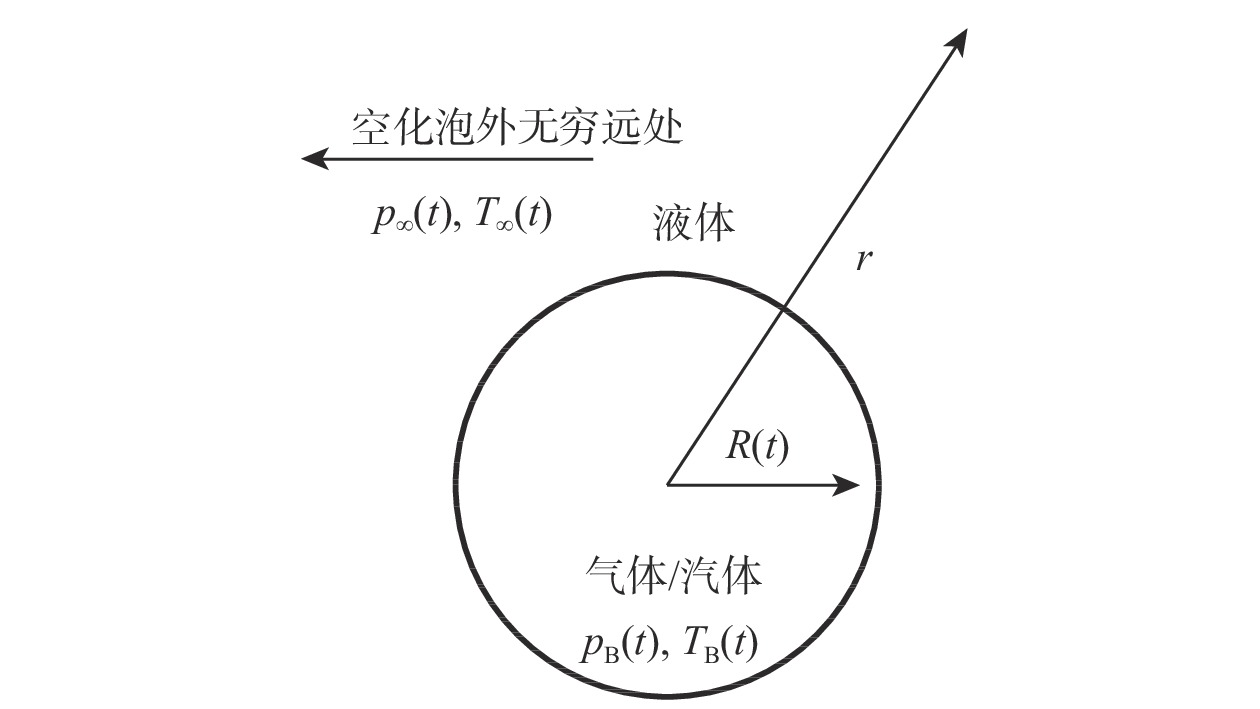
 下载:
下载:
















